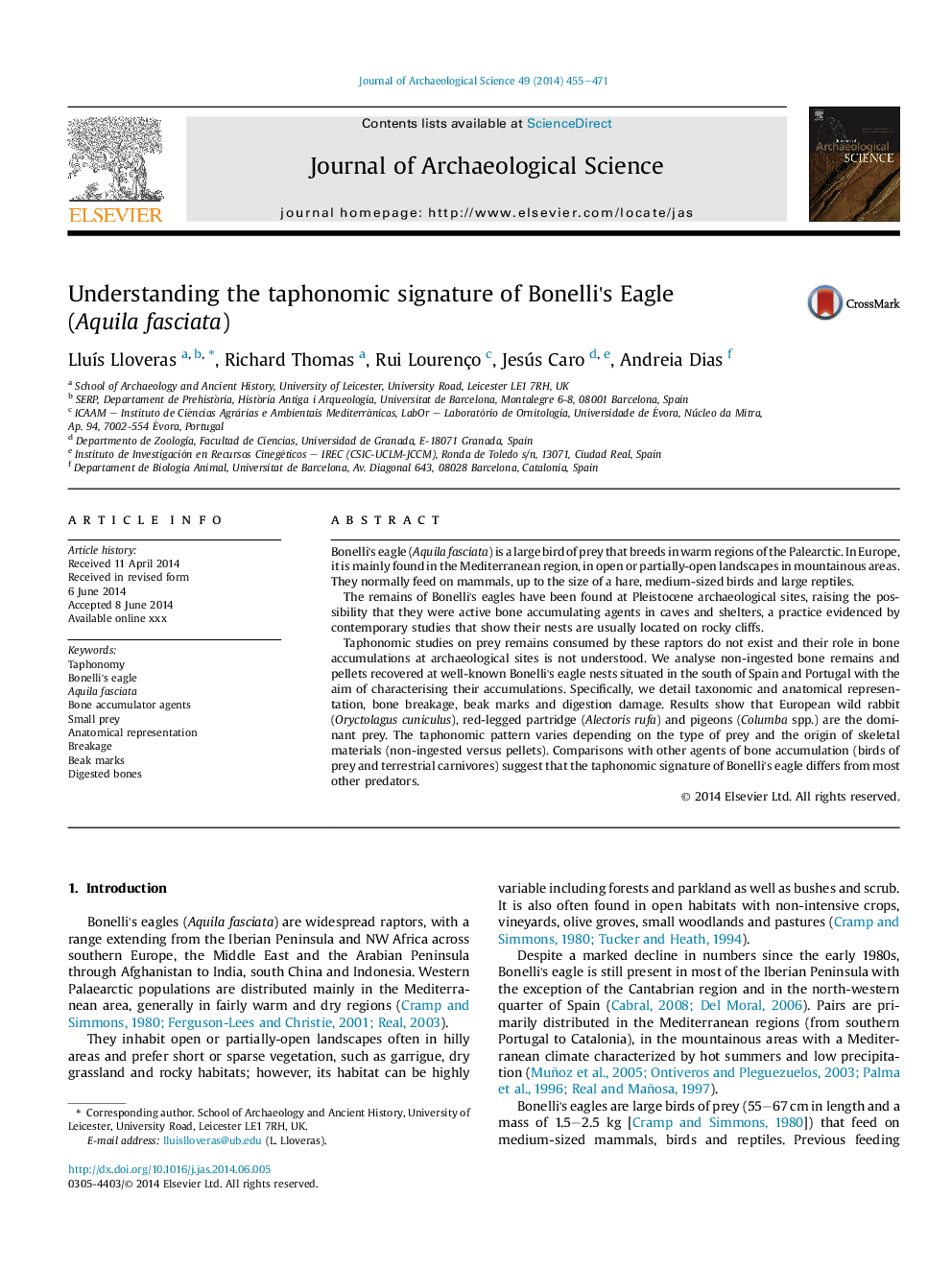| Article ID | Journal | Published Year | Pages | File Type |
|---|---|---|---|---|
| 7443108 | Journal of Archaeological Science | 2014 | 17 Pages |
Abstract
Taphonomic studies on prey remains consumed by these raptors do not exist and their role in bone accumulations at archaeological sites is not understood. We analyse non-ingested bone remains and pellets recovered at well-known Bonelli's eagle nests situated in the south of Spain and Portugal with the aim of characterising their accumulations. Specifically, we detail taxonomic and anatomical representation, bone breakage, beak marks and digestion damage. Results show that European wild rabbit (Oryctolagus cuniculus), red-legged partridge (Alectoris rufa) and pigeons (Columba spp.) are the dominant prey. The taphonomic pattern varies depending on the type of prey and the origin of skeletal materials (non-ingested versus pellets). Comparisons with other agents of bone accumulation (birds of prey and terrestrial carnivores) suggest that the taphonomic signature of Bonelli's eagle differs from most other predators.
Related Topics
Physical Sciences and Engineering
Materials Science
Materials Science (General)
Authors
LluÃs Lloveras, Richard Thomas, Rui Lourenço, Jesús Caro, Andreia Dias,
